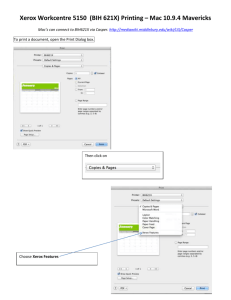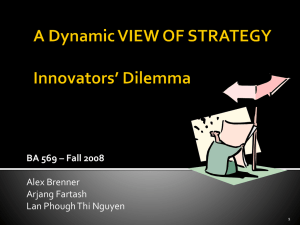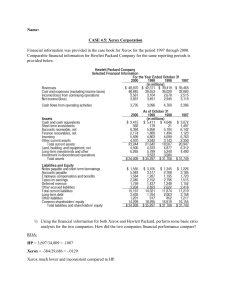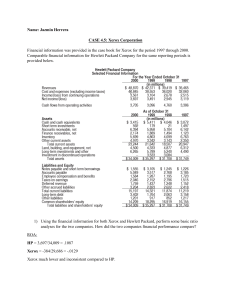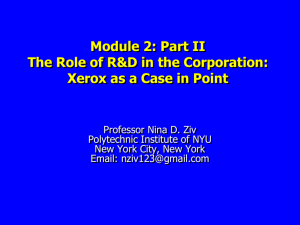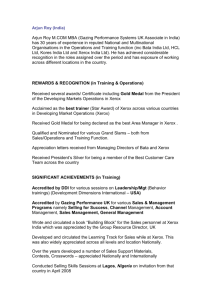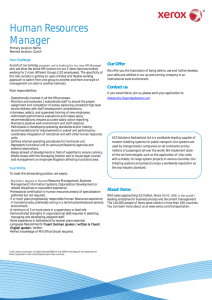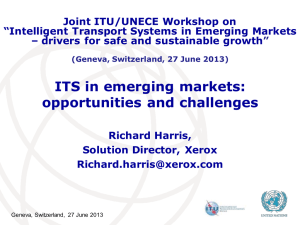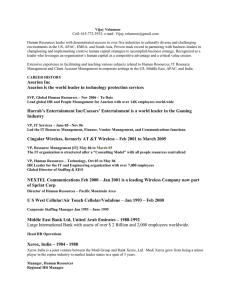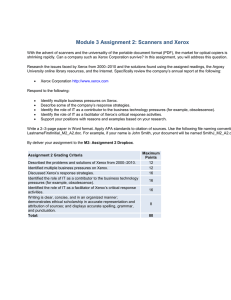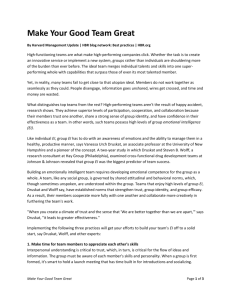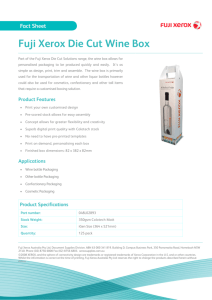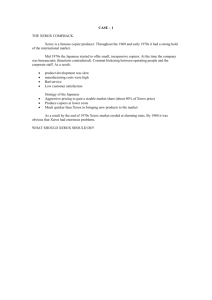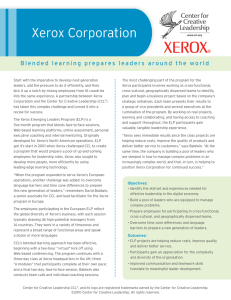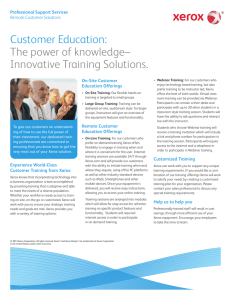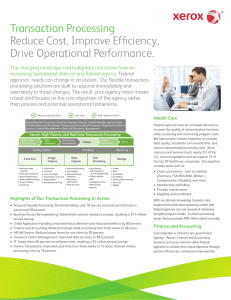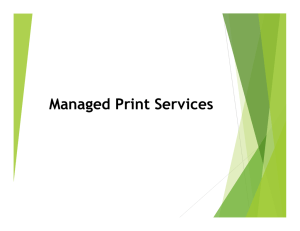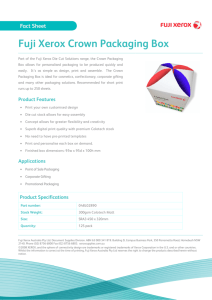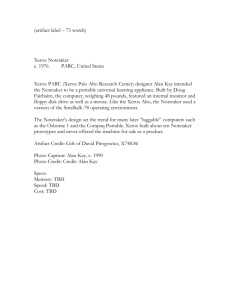TK - CEEC
advertisement
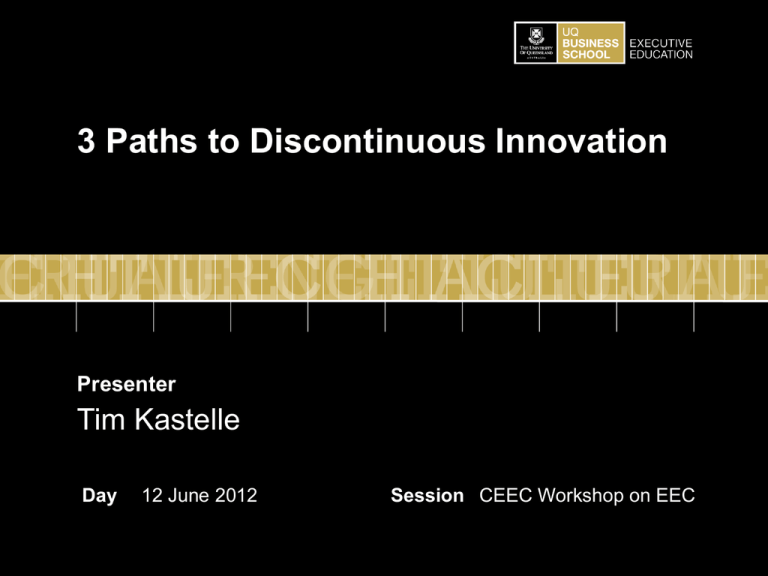
3 Paths to Discontinuous Innovation Presenter Tim Kastelle Day 12 June 2012 Session CEEC Workshop on EEC Path #1: Find a 10X Improvement • Quartz watches 10 times as accurate as the top of the line mechanical watches, for less than 1/10th of the cost • Question: what’s like quartz for comminution? Why is the retirement age 65? Life Expectancy • Germany 1880 – about 58 years (retirement age set at 65) • US 1935 – about 62 years (retirement age set at 65 too) • All the other countries that followed in the next decade <60 years Life Expectancy at Birth (US) So… What was the biggest innovation that drove this change in life expectancy? Medical Handwashing • • • • First suggested – 1840s First evidence that it works – 1850s Germ theory of disease – 1860s First use in surgery – 1870s • In widespread use – 1920s Ideas are often the biggest innovations Innovation always changes behaviour Path #2: Find a new idea • We focus too much on technological innovation – that’s only part of the story • Question: what is a new way to think of comminution? Or processing? 1936 1950 Business Model Innovations in Copying • 1950s – copies made by mimeograph or dry thermal processes – very poor quality, hard to archive • Equipment was inexpensive, money was made on supplies • 90% of machines made < 100 copies per month The Arrival of Xerox • Invention of xerography – much higher quality, longer lasting (Chester Carlson files patent in 1937) • Haloid Corp licenses patent, sells first Xerox machine in 1950 • Problem: Xerox machines six times more expensive than competitive technology, cost per copy about the same • Kodak, GE, IBM and Arthur D. Little Consultants all concluded there was no market for Xerox machines 1959 The New Business Model • High volume users • Lease machines instead of selling them, includes 2000 copies per month, customers pay extra for all further copies • Improved quality and convenience led to average user making 2000 copies per day! • The more copies made, the more money Xerox makes Dominant Logic of Xerox • More copies are better • New product innovations must lead to higher volume – Duplexing – Collating – Stapling – Copies per minute The State of Play by the1970s • Xerox and Kodak dominate the market, selling nothing but high volume machines • Sales are made by internal sales force, service performed by internal service teams • Cost of equipment very high (no more leasing) • Small volume users either use older methods or go to copy centres Another New Business Model • • • • Cheap copiers, no features Very high cost per copy, mediocre technology Copiers sold through office supply stores Sales and service outsourced Competing Business Models New Business Models for Disruptive Innovation • Choose a market segment whose needs are not being met • Focus on this segment, build competencies, increase skills • Use new competencies to expand into more profitable parts of the value chain or better market segments • Compete against large incumbents by changing the experience curve • Photocopiers - Xerox Market Share: – – – – 1975: 75% 1980: 42% 1985: 35% Who has the big market share now? Canon and Ricoh Path #3: Find a New Business Model • New business models start in niches (think: taxi drivers + Prius, or hydrogen-powered vehicles + bus fleets) • In terms of performance, they always look lousy at the start • Question: what would a new business model look like in processing? e.g. what happens if we stop competing on capital efficiency and start competing on processing efficiency? Three Paths to Discontinuous Innovation 1. Find a 10X improvement in performance. 2. Find a new idea. 3. Find a new business model. Thank you! timkastelle.org/blog/

